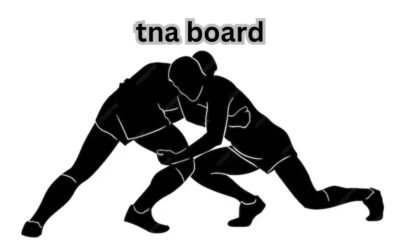INSURANCE
Divorce Attorney vs. Lawyer: Understanding the Key Differences

Divorce is often a challenging and emotional experience, and choosing the right legal representation can significantly impact the process and outcome. You may have heard the terms “divorce attorney vs lawyer” and “divorce lawyer” used interchangeably, but is there a difference between the two? In this comprehensive blog post, we’ll explore the distinctions between a divorce attorney and a lawyer, helping you make an informed decision for your unique situation.
The Importance of Choosing the Right Legal Help
Navigating a divorce can feel overwhelming, and understanding the legal landscape is crucial. Whether you’re contemplating divorce or already in the midst of it, you’ll need legal guidance. This is where the roles of a divorce attorney and a lawyer come into play. While both are legal professionals, their expertise and functions can differ in significant ways.
By the end of this post, you’ll have a clear understanding of what sets a divorce attorney apart from a lawyer, what each can offer, and how to choose the right professional for your needs. Let’s dive in!
What Is a Divorce Attorney?
A divorce attorney specializes in handling divorce cases. These legal professionals are well-versed in family law, which includes divorce proceedings, child custody, alimony, and property division. Their primary role is to represent clients during the divorce process and advocate for their interests.
Key Roles of a Divorce Attorney:
- Legal Representation: Divorce attorneys represent clients in court, advocating for their rights and interests.
- Negotiation: They negotiate settlements, aiming for fair outcomes for their clients.
- Documentation: Divorce attorneys handle all necessary legal paperwork, ensuring that everything is filed correctly and on time.
- Guidance: They provide legal advice, helping clients understand their rights and options.
What Is a Lawyer?
The term lawyer is a broad category that refers to any licensed legal professional who provides legal advice and representation. While all divorce attorneys are lawyers, not all lawyers specialize in divorce or family law. A lawyer may practice in various fields, such as criminal law, corporate law, or personal injury law.
Key Roles of a Lawyer:
- Legal Advice: Lawyers offer legal guidance across various fields, not limited to divorce.
- Representation: They can represent clients in a variety of legal matters, including but not limited to family law.
- Drafting Documents: Lawyers draft legal documents, contracts, and agreements based on their area of expertise.
Divorce Attorney vs. Lawyer: The Key Differences
To further clarify the distinction, let’s break down some essential differences between a divorce attorney and a lawyer.
Specialization
- Divorce Attorney: Focuses specifically on divorce and family law matters.
- Lawyer: May practice in various legal fields without specializing in divorce.
Expertise
- Divorce Attorney: Has in-depth knowledge of family law, divorce proceedings, and related matters.
- Lawyer: While knowledgeable, may not have the same level of expertise in divorce law unless they specialize in it.
Representation in Court
- Divorce Attorney: Represents clients in divorce-related court proceedings.
- Lawyer: Can represent clients in court but may not be familiar with the intricacies of family law unless that is their area of focus.
Approach to Cases
- Divorce Attorney: Typically takes a more hands-on approach, providing personalized strategies for divorce cases.
- Lawyer: May offer broader legal advice without the same level of tailored approach specific to divorce.
When to Hire a Divorce Attorney vs. a Lawyer
Knowing when to hire a divorce attorney versus a general lawyer can make a significant difference in the outcome of your case. Here are some situations to consider:
Hire a Divorce Attorney When:
- Complex Financial Situations: If your divorce involves significant assets, debts, or business interests, a divorce attorney’s expertise can be invaluable.
- Child Custody Disputes: When children are involved, having an attorney experienced in custody arrangements can help protect your parental rights.
- Need for Court Representation: If your case is likely to go to court, hiring a divorce attorney is advisable.
Hire a Lawyer When:
- General Legal Advice: If you have a legal question that isn’t specifically about divorce, a general lawyer may be appropriate.
- Simple Divorces: If your divorce is amicable, and there are no children or significant assets involved, you might not need a specialized attorney.
- Other Legal Issues: If you have other legal matters unrelated to divorce, you may benefit from hiring a lawyer who can handle those aspects.
How to Choose the Right Divorce Attorney
Finding the right divorce attorney can be a daunting task. Here are some tips to help you make the right choice:
Research and Referrals
- Ask for Recommendations: Seek referrals from friends, family, or colleagues who have experienced divorce.
- Online Research: Check online reviews and ratings of divorce attorneys in your area.
Experience and Specialization
- Look for Specialization: Ensure the attorney specializes in divorce and family law.
- Check Experience: Review their track record with divorce cases similar to yours.
Initial Consultation
- Schedule a Consultation: Most attorneys offer free consultations. Use this opportunity to gauge their understanding of your situation.
- Ask Questions: Prepare questions about their experience, approach to divorce cases, and fees.
Communication Style
- Assess Communication: Choose an attorney who communicates clearly and is approachable. Good communication is vital during stressful times.
Conclusion
Understanding the difference between a divorce attorney and a lawyer is crucial when navigating the complexities of divorce. While both can provide legal guidance, a divorce attorney specializes in family law and is better equipped to handle the unique challenges of divorce proceedings.
Choosing the right legal representation can significantly impact your divorce experience and outcome. Take the time to research, consult with potential attorneys, and make a decision that aligns with your specific needs.
INSURANCE
Understanding Unit 102: A Comprehensive Guide

In various educational and professional contexts, “Unit 102” denotes a specific module or course component. Its content varies across disciplines, but it often introduces foundational concepts essential for advanced learning. This article delves into the significance of unit 102 across different fields, highlighting its objectives, typical content, and its role in building a solid knowledge base.
The Role of Unit 102 in Educational Curricula
Unit 102 serves as a building block in many educational programs, providing students with essential knowledge and skills. It often follows an introductory unit (Unit 101) and precedes more specialized modules. The content of unit 102 varies depending on the discipline but generally aims to deepen understanding and prepare students for more complex topics.
Common Themes in Unit 102 Across Disciplines
While the specifics of Unit 102 differ across fields, several common themes emerge:
- Fundamental Concepts: Unit 102 often covers core principles that are crucial for advanced study. For example, in a British Sign Language course, Unit 102 focuses on conversational skills, enabling learners to engage in basic social interactions.
- Practical Skills: Many Unit 102 modules emphasize hands-on skills. In electrical installation programs, Unit 102 addresses health, safety, and environmental considerations, ensuring that learners can work safely and responsibly.
- Professional Practices: Some Unit 102 units introduce industry standards and professional behaviors. In salon management courses, Unit 102 covers presenting a professional image, teaching students the importance of appearance and conduct in a professional setting.
Examples of Unit 102 in Various Fields
To illustrate the diversity of Unit 102, let’s explore its application in different disciplines:
- British Sign Language (BSL): In BSL courses, Unit 102, titled “Conversational British Sign Language,” focuses on developing both productive and receptive skills. Learners engage in simple exchanges, covering topics like describing people, using numbers, discussing interests, and talking about food and drink. The unit emphasizes correct hand shapes, facial expressions, and BSL structure to ensure effective communication.
- Electrical Installation: In the NVQ 2346-03 Level 3 Electrical Installation Qualification, Unit 102 is dedicated to “Health, Safety and Environmental Considerations.” This unit equips learners with the knowledge to apply health and safety legislation in the workplace, assess work environments for hazards, and implement safe working procedures. It covers topics such as risk assessments, safe use of tools and equipment, and environmental legislation compliance.
- Salon Management: For those pursuing a career in the beauty industry, Unit 102 often focuses on “Presenting a Professional Image in a Salon.” This unit teaches learners how to maintain a professional appearance, communicate effectively with clients, and adhere to salon policies. It covers aspects like personal hygiene, appropriate attire, and professional behavior to ensure a positive client experience.
The Importance of Unit 102 in Skill Development
Unit 102 plays a crucial role in bridging the gap between introductory knowledge and more advanced concepts. By focusing on fundamental skills and professional practices, it prepares learners for the challenges of their chosen field. Successfully completing unit 102 often serves as a prerequisite for more specialized units, underscoring its importance in the learning pathway.
Conclusion
Understanding the role and content of Unit 102 is essential for students and professionals across various disciplines. By providing foundational knowledge and skills, Unit 102 sets the stage for advanced learning and professional development. Whether it’s mastering conversational skills in a new language, adhering to safety standards in technical fields, or presenting a professional image in client-facing roles, Unit 102 equips learners with the tools they need to succeed.
FAQs
What is Unit 102?
Unit 102 is a foundational module in many educational and vocational programs, focusing on essential concepts and skills specific to a field of study.
What topics does Unit 102 cover?
The topics vary by discipline but often include core principles, practical skills, and professional practices, such as safety standards, communication skills, or professional image presentation.
Why is Unit 102 important?
It bridges the gap between introductory and advanced concepts, helping learners build a solid foundation for further study or professional development.
Can I take Unit 102 without completing Unit 101?
Typically, Unit 101 is a prerequisite as it introduces basic concepts needed to succeed in Unit 102.
How is Unit 102 assessed?
Assessment methods vary but may include practical demonstrations, written exams, or coursework designed to test both theoretical knowledge and applied skills.
INSURANCE
Understanding Oil Transfer Pumps: A Comprehensive Guide

Oil transfer pump are essential tools in various industries, facilitating the efficient movement of oil and other fluids from one container to another. Whether you’re in the automotive sector, industrial manufacturing, or agriculture, understanding the types, applications, and maintenance of these pumps is crucial. This guide delves into the intricacies of oil transfer pumps, offering insights to help you make informed decisions.
What is an Oil Transfer Pump?
An oil transfer pump is a device designed to move oil from one location to another. These pumps are vital in scenarios where manual transfer would be inefficient or impractical. They come in various designs and capacities, tailored to specific applications and fluid types.
Types of Oil Transfer Pumps
- Manual Pumps: Operated by hand, these are suitable for small-scale operations where precision and control are paramount. They are cost-effective and easy to use but may not be ideal for transferring large volumes.
- Electric Pumps: Powered by electricity, these pumps are efficient and capable of handling larger volumes. They are commonly used in industrial settings where speed and volume are critical.
- Pneumatic Pumps: Utilizing compressed air, pneumatic pumps are ideal in environments where electrical power sources are unavailable or pose a risk. They are often used in hazardous areas due to their safety features.
- Hydraulic Pumps: These pumps use hydraulic power to transfer oil, offering high pressure and flow rates. They are suitable for heavy-duty applications requiring robust performance.
Applications of Oil Transfer Pumps
- Automotive Industry: Used for transferring engine oils, lubricants, and other fluids during maintenance and manufacturing processes.
- Industrial Manufacturing: Essential for moving oils and lubricants in machinery, ensuring smooth operations and reducing downtime.
- Agriculture: Employed in transferring oils for machinery maintenance, ensuring equipment longevity and efficiency.
- Marine: Vital for transferring fuel oils and lubricants in ships and boats, maintaining operational readiness.
Key Features to Consider
When selecting an oil transfer pump, consider the following features:
- Flow Rate: Determines how quickly the pump can transfer oil. Higher flow rates are suitable for large volumes, while lower rates offer precision.
- Viscosity Compatibility: Ensure the pump can handle the viscosity of the oil you intend to transfer.
- Material Construction: Pumps should be made from materials compatible with the oil type to prevent corrosion and degradation.
- Power Source: Choose between manual, electric, pneumatic, or hydraulic based on your operational needs and available resources.
Maintenance and Safety Tips
- Regular Inspection: Periodically check for wear and tear, leaks, and other signs of damage.
- Proper Cleaning: After use, clean the pump to prevent contamination and ensure longevity.
- Follow Manufacturer Guidelines: Adhere to the manufacturer’s instructions for operation and maintenance to ensure safety and efficiency.
- Use Appropriate Personal Protective Equipment (PPE): Always wear suitable PPE to protect against potential hazards during operation.
Conclusion
Oil transfer pumps are indispensable tools across various industries, offering efficient and safe fluid transfer solutions. By understanding the different types, applications, and maintenance practices, you can select the right pump for your needs and ensure its optimal performance over time.
FAQs
What types of oil transfer pumps are available?
There are manual, electric, pneumatic, and hydraulic oil transfer pumps. Each type is suited to specific applications and operational needs.
How do I choose the right oil transfer pump?
Consider factors such as the type of oil, flow rate, viscosity, pump material, and available power sources when selecting a pump.
Are oil transfer pumps safe to use?
Yes, when used according to manufacturer guidelines. Always inspect the pump before use and wear appropriate personal protective equipment (PPE).
How do I maintain an oil transfer pump?
Regularly inspect the pump for wear, clean it after use, and follow the manufacturer’s maintenance recommendations to ensure longevity and efficiency.
INSURANCE
Unlocking Your Future: How to Earn a Free Master’s Degree Online


 CRYPTO3 months ago
CRYPTO3 months agoCrypto-Engine.Pro Blog: Your Go-To Source for Crypto Trading Insights

 GENERAL3 weeks ago
GENERAL3 weeks agoUnderstanding TNA Board: A Comprehensive Guide for Beginners

 GENERAL4 months ago
GENERAL4 months agoEverything You Need to Know About NSFW411: The Ultimate Guide

 ENTERTAINMENT4 months ago
ENTERTAINMENT4 months agoExploring Mywape: Your Guide to Quality Vaping

 FOOD5 months ago
FOOD5 months agoExploring the Benefits of süberlig: A Comprehensive Guide

 BLOG4 months ago
BLOG4 months agoDiscover the Secrets Behind the /vital-mag.net blog: A Closer Look at the Popular Blog

 FOOD5 months ago
FOOD5 months agoUnveiling the Beauty of Tamisie: A Guide to this Exquisite Fabric

 ENTERTAINMENT4 months ago
ENTERTAINMENT4 months agoNavigating Erome: Tips and Tricks for a Safer Experience on Adult Platforms





















